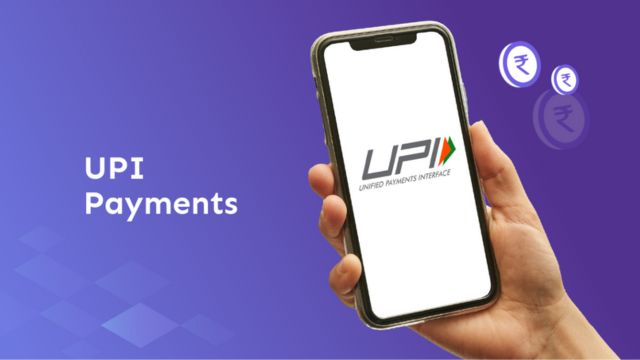The revolutionary Unified Payments Interface (UPI) payment technology has revolutionised how people deal with their money. UPI has successfully combined fund routing, merchant payments, and banking functions into a single, user-friendly platform by combining several bank accounts into a single mobile application. UPI streamlines the payment process, enabling users worldwide to conduct transactions more quickly, easily, and conveniently.
What is Unified Payments Interface (UPI)?
Users can rapidly move money across bank accounts using UPI, a real-time payment system. In contrast to conventional payment or money transfer techniques, UPI unifies several banking services under one roof. With this technology, people can use a single application that their bank provides to transfer and receive money, pay businesses, and even plan future payments.
Fast and safe transfers are made possible by the interface’s support for both Peer to Peer (P2P) and Peer to Merchant (P2M) transactions. The capacity of UPI to manage “collect requests,” in which users can ask for payments from third parties and later receive money straight into their accounts, is one of its primary features. It is therefore the perfect option for both private and professional dealings.
How Does UPI Operate?

All participating financial institutions are connected to the platform on which UPI operates. A UPI-enabled mobile app, which usually has a unique identification number (commonly referred to as a VPA or Virtual Payment Address), must be linked to the user’s bank account in order to use UPI. This VPA protects sensitive data by acting as an alias for the user’s bank account number.
Users can carry out a range of financial operations after linking their bank account:
- Fund Transfers: Instantly send money to friends, family, or suppliers.
- Merchant Payments: Make purchases online or in-store without utilising cash or credit cards.
- Scheduled Payments: Establish reminders for regular transactions or bill payments.
- Collect Requests: Ask people to pay you when it’s convenient for them.
UPI offers a simplified method of handling personal funds with its extensive feature set and easy-to-use interface.
Key Benefits of UPI
- Convenience and accessibility: are two of UPI’s main advantages. It does away with the requirement for numerous platforms and apps to carry out various kinds of transactions. It combines merchant payments, bank transfers, and bill payments into a single user-friendly interface. Because it is compatible with several banks, customers may access their bank accounts whenever they want via a tablet or smartphone, which makes it a very practical way to make payments.
- Instantaneous Transactions: Conventional payment methods, such as checks or wire transfers, can be slow to process. But with UPI, even on vacations or weekends, transactions are completed promptly. Because of its instantaneity, UPI is especially attractive to users who have to make payments on short notice.
- Security Features: Two-factor authentication and multi-layer encryption techniques make UPI transactions extremely safe. To make sure that only authorised people may finish transactions, user authentication is required for every transaction. This can be done by biometric verification or a PIN. Because of this, UPI is a secure way to transmit and receive money, even for big amounts.
- Cost-effective: Compared to other payment options like foreign wire transfers or credit card transactions, UPI is more economical due to its low fees. Businesses who need to process large numbers of small payments without incurring significant transaction costs may particularly benefit from this.
- Interoperability: Users don’t have to worry about which bank they are transferring money to or receiving payments from because UPI makes it easier for transactions to happen between various banks and financial organisations. Because of its interoperability, UPI is a solution that can be used by anyone with a mobile device and bank account.
UPI’s Pilot Launch and Development
The National Payments Corporation of India (NPCI), which is in charge of creating payment systems, came up with the idea for UPI. Twenty-one banks participated in a trial launch to guarantee the platform’s security and operation. This test phase, which took place in April 2016, was crucial to improving the UPI system and making sure it would be reliable for widespread use.
Soon after, UPI was formally launched, and it has since kept gaining traction. Currently, UPI is accessible to millions of users thanks to the assistance of hundreds of banks. The system has grown to be a crucial component of the digital payments environment, enabling smooth transactions for a range of applications, including e-commerce payments and personal transfers.
How UPI Has Changed Digital Payments
Digital payments have become much easier and more accessible thanks to UPI. Users had to manage several apps for various functions prior to UPI, including one for bill payment, another for mobile recharges, and one for bank transactions. UPI is the preferred option for consumers who wish to easily manage their financial transactions since it has lowered the friction associated with digital payments by combining all of these services onto a single platform.
Its broad use has also been aided by the increasing acceptance of UPI among retailers of all sizes. UPI has made it possible for retailers, service providers, and even small enterprises to swiftly and securely take payments, which has led to an increase in cashless transactions in a variety of industries.
The Future of UPI
A number of intriguing opportunities await as UPI develops further. The system might be further improved by implementing more recent technology, such blockchain for increased security and artificial intelligence (AI) for fraud detection. Furthermore, it is anticipated that the addition of additional functionalities, such UPI for international transactions, will strengthen UPI’s position as a potent instrument for international digital payments.
UPI is anticipated to become the foundation of global digital financial ecosystems and experience a rise in usage in online commerce, government services, and cross-border corporate transactions.
Conclusion
Digital payments are being revolutionised by the Unified Payments Interface (UPI). UPI has made sending and receiving money easier by providing users with the speed, ease, and security to handle their financial transactions from their cellphones. UPI is well-positioned to continue influencing the direction of digital payments and help create a more connected and cashless world thanks to its growing acceptance and potential for expansion.
Ready to embrace the future of seamless digital payments? Explore how Unified Payments Interface (UPI) can simplify your financial transactions. Visit digitalindiamib.com today to learn more about UPI, its benefits, and how you can start using it for faster, safer, and more efficient payments.
















